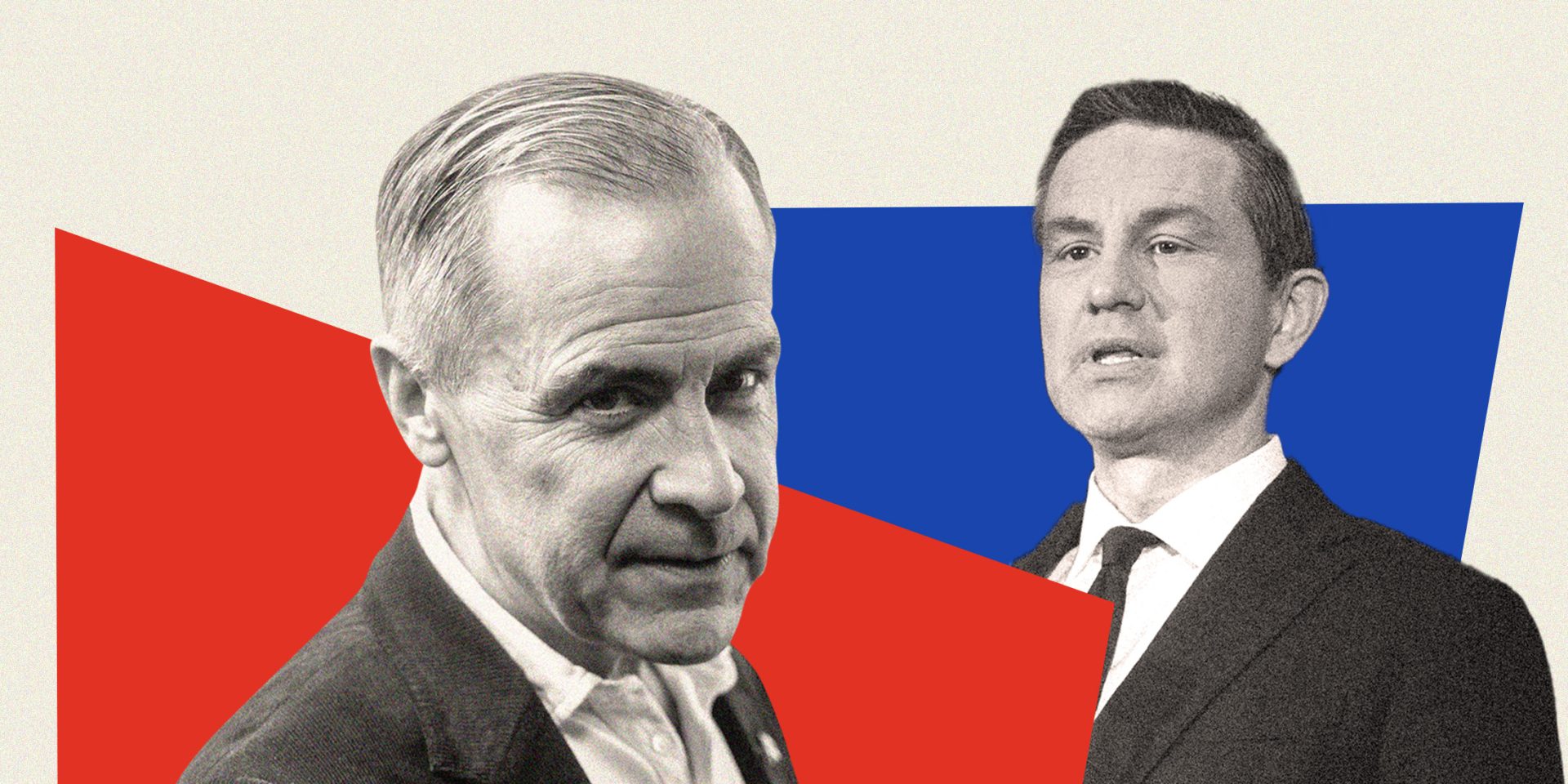‘Easier to advertise cookies than spinach’: Conservatives outspent the Liberals seven-to-one in 2024 advertising

The federal Conservatives spent more than $16.5-million on advertising in 2024, outgunning the governing Liberals’ $2.3-million by more than seven to one as the governing Grits struggled to gain a foothold against the official opposition’s permanent pre-election war footing. But in the lead-up to and since the spring election, the Liberals’ new leader may have successfully flipped the script.
Digital marketing strategist Harneet Singh told The Hill Times that despite the Conservatives blanketing the airwaves and social media in 2024 with Leader Pierre Poilievre while the Liberals struggled to gain traction with their own increasingly unpopular messenger—then-prime minister Justin Trudeau—Prime Minister Mark Carney (Nepean, Ont.) “is now in the driver’s seat” since his success in the party leadership and general election.
“It’s a complete flip,” said Singh, a managing principal at EOK Consults, noting that the Conservatives spent last year putting Poilievre front and centre in their advertising, building off of a $3-million spend in the summer of 2023 to reintroduce Poilievre to voters following his election as party leader. But the Liberals had lacked the same confidence in their former leader.
That confidence in the Conservatives’ messaging and their messenger—and the Liberals’ lack thereof—is demonstrated in the accounting for both parties on advertising, Singh added.

According to the federal parties’ 2024 financial returns, the Conservatives spent roughly one-third of their $50-million annual expenses on advertising, which was nearly double the $8.5-million it spent in 2023. Almost half of last year’s $16.59-million advertising budget was allocated to television ads, $7.8-million, up from $5.8-million the previous year, and an additional $7.1-million was spent on “other” advertising, including print and digital ads, a more than $5-million increase from the prior year. The remaining $1.5-million was spent on radio advertising, more than double the $668,000 it spent in 2023.
In comparison, the Liberals spent just $2.3-million on advertising last year, the bulk of which—just shy of $2-million—was allocated to the party’s digital ads, with the remaining split between television ($305,691), and radio advertising ($3,915).
The Liberals’ advertising budget also accounts for a much smaller fraction of the party’s overall $18.8-million in expenses, and just a third of the $6.2-million it spent on salaries and benefits. The Liberals also spent $3.4-million on fundraising—ultimately grossing $15.1-million—and spent roughly $2.5-million each on research and polling, and “professional services.”
In comparison, the Conservatives spent $8-million on fundraising—raking in $42.2-million—and $9.3-million on salaries and benefits, $3.6-million on office expenses, $3-million on professional services, and $2.5-million on research and polling.
The Liberals and Conservatives both ended the year with deficits of $1.7-million and $1.47-million, respectively, though both still had a surplus in cash-on-hand and net assets by year’s end.
Of the major federal parties, only the Conservatives and Liberals have submitted financial returns for 2024, with the remaining parties having been granted an extension to the original June 30 deadline—the NDP now has until Aug. 29, and the Bloc Québécois until Sept. 29. The Green Party was given until Aug. 14, but their financials have yet to be released by Elections Canada by publication deadline.
While the federal parties’ finances for 2025 will not be available until next July at the earliest, according to Meta’s Ad Library, from Jan. 1 through when the election was called on March 28, the Conservatives spent nearly $2.2-million on Facebook and Instagram across the official pages for the party and Poilievre. In comparison, the Liberals spent just over $1.4-million across Carney’s and the party’s official pages.
During the election campaign, the Liberals accelerated their spending to $4.7-million on the two pages between March 23 and April 27, overtaking the Conservatives’ combined $3.38-million. Since then, the parties have massively reduced spending, though the Liberals still maintain a relatively larger expenditure of nearly $70,000 since April 29, compared to almost $6,700 for the Conservatives.
Singh told The Hill Times that while the Conservatives may not have gotten the results they expected in the last election, the party’s ability to mobilize a large number of voters through their online voter identification campaigns and messaging is something of which it can be proud.
However, with the election in the rear view, Singh said he doubts the Conservatives will have enough fodder to justify their pre-election spending on both messaging and voter identification campaigns, and will need to prioritize the latter to maintain their coalition for the next election.

Pollara’s Dan Arnold, who previously led the Liberal Party’s election research from 2015 through 2021 and within Trudeau’s Prime Minister’s Office, told The Hill Times that that the level of spending on advertising made sense given the Conservatives’ fundraising success in 2024.Yet he questions how that money was spent given a “good chunk” was likely aimed at attacking Trudeau, the carbon tax, or the NDP and then-leader Jagmeet Singh.
“That proved pretty useless in the election,” Arnold said, noting that while there may have been fewer attacks on Singh than on Trudeau and carbon pricing, it was probably even more counterproductive.
“The Conservatives spent a lot of money, but they didn’t get many results, other than possibly playing a part in driving Trudeau out and driving the NDP down, but to some extent, that may have been to their disadvantage,” Arnold continued.
On the flip side, Arnold said the Liberals most likely would have wanted to spend more on advertising last year if only they had the cash to spend and an effective messenger to centre.
“The Liberals just couldn’t keep up with the Conservative advertising arms race,” he said, noting that the focus on digital advertising over television and radio was the best strategy available for a cash-strapped party.
“Unless you have enough for a multimillion-dollar television campaign, it doesn’t make sense,” Arnold explained. “You can push even half a million much further on digital, you can be more targeted, and you can test things out, too.”
Arnold said the Liberals had been lacking the “resonance with the public” for any message to be effective, partially due to the negative sentiment toward its primary messenger in the past two years.
“It’s a lot easier to advertise cookies than spinach,” Arnold said, explaining that it would now be far easier for the Liberals with Carney as their messenger than it was when Trudeau was at or below 20 per cent in the polls.

“They didn’t have a product that was popular with the public, and they didn’t have enough money to put behind it to change that perception,” Arnold continued. “Now they have both of those things, which is why the spending is paying off more than it did before the election.”
Earnscliffe Strategies’ Zubin Sanyal, who led Trudeau’s digital strategy during the 2021 election, told The Hill Times that the money allocated to television ads is the best indication of any party’s confidence in its leader to present a winning message.
“When it’s on television, it has to be the leader; the message has to be in their voice,” Sanyal explained. “However you may feel about Poilievre, he is an expert communicator, and the Conservatives’ television spending shows how confident they were in his ability to deliver their message and that permanent campaign mode.”

Without that confidence, the Liberals had been smart to run “lean and digital first” to downplay their then leader, and ensure the party’s coffers had money left “when the rubber hit the road” and the election arrived, Sanyal said.
Conservative digital strategist Cole Hogan agreed that given the year the Liberals had in 2024, “they had no real reason to be advertising on television,” and had been smart to focus their attention on digital.
“The Liberals probably didn’t want to have Trudeau in a lot of their ads, but on digital, you can focus more on the party brand or maintaining email lists and donors,” Hogan explained, noting that Trudeau appeared in only a small portion of the Liberals’ digital ads last year.
Hogan predicts that since selecting Carney as the party’s new leader this past March and the party’s success in the last election, The Liberals’ advertising spend will be more “neck-and-neck” with the Conservatives.
“This is something the Liberals were very good at in 2015, but that’s just the natural flow of things for opposition parties who are a little hungrier than when they’re in government,” Hogan explained. “I think the Liberals just rediscovered that politics is ‘pay to play’ because organic reach just isn’t enough.”
The Hill Times
Federal party advertising, 2015-2024
| Conservative Party | Liberal Party | |||||||
| Television | Radio | Other | Total | Television | Radio | Other | Total | |
| 2024 | $7,876,999 | $1,542,346 | $7,171,379 | $16,590,724 | $305,691 | $3,915 | $1,999,934 | $2,309,540 |
| 2023 | $5,824,685 | $668,212 | $2,049,970 | $8,542,867 | $0 | $0 | $381,346 | $381,346 |
| 2022 | $0 | $6,786 | $272,273 | $279,059 | $0 | $0 | $342,954 | $342,954 |
| 2021 | $8,834,659 | $1,846,357 | $8,526,510 | $19,207,526 | $6,510,045 | $1,045,630 | $7,932,939 | $15,488,614 |
| 2020 | $2,735 | $5,092 | $440,608 | $448,435 | $7,118 | $95,147 | $418,515 | $520,780 |
| 2019 | $11,226,988 | $2,230,100 | $5,856,902 | $19,313,990 | $5,272,035 | $1,064,397 | $7,616,290 | $13,952,722 |
| 2018 | $1,212,866 | $565,134 | $397,124 | $2,175,124 | $0 | $20,920 | $766,152 | $787,072 |
| 2017 | $513,293 | $74,468 | $318,087 | $905,848 | $67,670 | $0 | $601,449 | $669,119 |
| 2016 | $0 | $0 | $7,793 | $7,793 | $0 | $0 | $818,256 | $818,256 |
| 2015 | $18,426,887 | $6,200,303 | $2,672,641 | $27,299,831 | $18,105,273 | $860,546 | $6,864,008 | $25,829,827 |






 LICENSING
LICENSING PODCAST
PODCAST ALERTS
ALERTS













